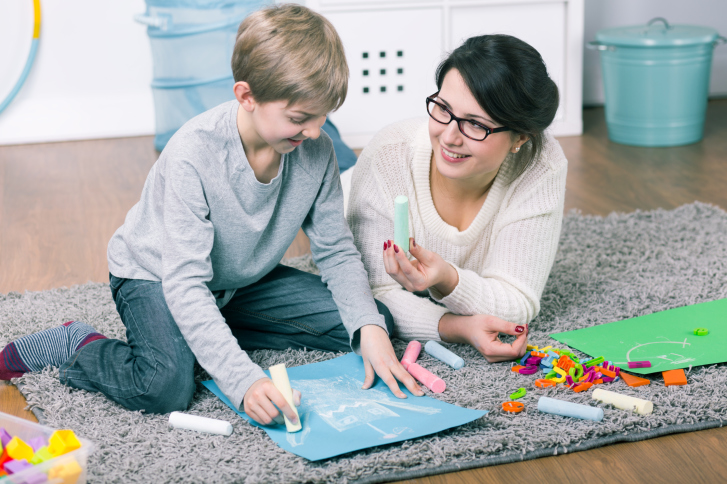If your child has difficulty with sensory processing or is often over- or under-stimulated, then you may want to consider putting your child on a “sensory diet”. Just what is a sensory diet? Let’s find out in today’s blog!
What is a Sensory Diet?
According to Biel & Peske, authors of “Raising a Sensory Smart Child: The Definitive Handbook for Helping Your Child with Sensory Integration Issues”, a sensory diet is “The optimum sensorimotor input a person needs to feel alert, exert effortless control, and perform at peak.” That basically means the amount of sensory information a child needs to be able to operate at their highest potential. This includes auditory, visual, taste, touch, smell, proprioceptive, and vestibular input. We all interact with our surroundings in a way that stimulates us properly. For example, if you’re in a long meeting, you may fidget in your chair to get comfortable, or maybe you occasionally twirl your hair when you’re bored. It’s the same for children who have sensitive sensory processing. A sensory diet is a schedule of sensory activities throughout the day that are designed to stimulate your child in a way that is right for them. The key to a sensory diet is finding the right amount of input, then sticking to it.
What Does a Sensory Diet Look Like?
Because every child is different, every sensory diet is different, too. If you would like to test a few activities for your child’s particular sensory needs, you can schedule a visit to our sensory room! After playing with a few different activities, you can take the ones that your child reacts to best and work them into their sensory diet.
Although all sensory diets are different, there are a few things that they have in common. The ideal sensory diet will include a schedule of breaks and activities every 45 minutes to two hours. Your specialist may work with your child by taking activity breaks every 45 minutes, then slowly working up to every two hours. An activity break usually last around 10-20 minutes, depending on your child’s needs. Most breaks will include visual, vestibular/proprioceptive, and tactile activities to stimulate your child. After the break, your child is ready to tackle whatever task they were working on!
The Connections Therapy Center
The Connections Therapy Center is a top therapy center serving families of children and adolescents with disabilities. Our team consists of the leading experts in the fields of pediatric speech, occupational therapy, speech-language pathology, and behavior sciences. We offer intensive, hands-on therapy for children and adolescents as well as resources for families. We are real therapists helping real families with real issues. If you are concerned about your child’s behavior, take a moment to fill out our quick questionnaire. If you’d like to schedule an appointment, call 202-561-1110 (Washington, D.C. office) or 301-577-4333 (Lanham office) or contact us via our website. Want to keep up with our latest news and blog posts? Follow us on Facebook, Twitter, Google+, and Pinterest.

